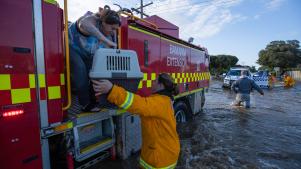With the latest news and industry updates being released by the Victorian Government today, a number of critical questions have been raised, particularly regarding essential infrastructure, requiring further clarification and expanded advice.
These questions have been addressed below and have been added to MBV’s full list of FAQs – which can be accessed by clicking here.
Small Scale Developments
Does the limit of five workers for small-scale construction apply to base stage and finishing stage?
Yes, the five worker limit applies to all stages of a construction build.
Small, Large and Early stage-land developments
What does ‘critical repairs for emergency or safety reasons’ mean?
‘Critical repairs for emergency or safety reasons’ are urgent repairs which must be undertaken to keep individuals within properties and work premises safe, to prevent individuals (including workers) from injury, to prevent property damage or damage to goods, or for urgent repair to an essential service. Urgent repair examples include:
- burst water service
- blocked or broken toilet system
- serious roof leak
- gas leak
- dangerous electrical fault
- flooding or serious flood damage
- serious storm or fire damage
- an essential service or appliance for hot water, water, cooking, heating, cooling or laundering is not working
- the gas, electricity or water supply is not working
- the property does not meet minimum rental standards
- a safety-related device, such as a smoke alarm or pool fence, is not working
- an appliance, fitting or fixture that is not working and causes a lot of water to be wasted
- any fault or damage in the property that makes it unsafe or insecure, including pests, mould or damp caused by or related to the building structure
- a serious problem with a lift or staircase.
Large Scale and Early-stage Land Development
What is ‘critical and essential infrastructure’?
There are three types of critical and essential infrastructure.
- Critical and Essential Infrastructure Type 1 (health, safety, wellbeing)
Construction or maintenance of critical and essential infrastructure that is urgently required for the purposes of sustaining human health, safety, and well-being. These projects can include civil works, building or construction activities, and can be privately or publicly funded. To fall into this category, a project must be deemed by the Victorian Government through a process that also involves endorsement by the Chief Health Officer (CHO). Projects are assessed on a case-by-case basis. The expectation is that very few activities will meet the criteria for approval. Project proponents can contact [email protected] to apply for a determination by the Chief Health Officer.
- Critical and Essential Infrastructure Type 2 (State Critical Infrastructure)
Activities deemed by the Victorian Government as State Critical Infrastructure projects. Projects are assessed on a case-by-case basis, and a list of State Critical Infrastructure projects is published below. The expectation is that very few activities will meet the criteria to appear on the list.
- Critical and Essential Infrastructure Type 3 (national security and defence)
Construction and maintenance for the purposes of national security and defence. Construction sites for projects in this category do not need to comply with the worker reduction limits in the Directions.
Further guidance can be accessed on the Victorian Government's website: https://www.coronavirus.vic.gov.au/coronavirus-sector-guidance-construction





